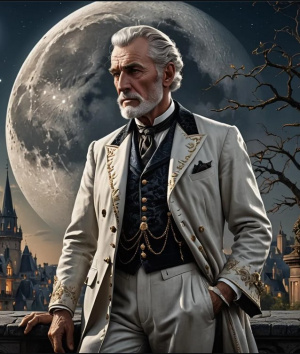Gautier Rousseau
- Paris -P- The Nature of the Mad in Paris -P- Malkavian -PLBE- The Mad in Paris 1900

Sobriquet: Rousseau
Appearance:
Behavior:
History
Théophile Gautier (born August 31, 1811, Tarbes, France) was a poet, novelist, critic, and journalist whose influence was strongly felt in the period of changing sensibilities in French literature—from the early Romantic period to the aestheticism and naturalism of the end of the 19th century.
Gautier lived most of his life in Paris. At the Collège de Charlemagne he met Gérard de Nerval and began a lasting friendship. He studied painting but soon decided that his true vocation was poetry. Sympathetic to the Romantic movement, he took part in the cultural battle that ensued when Victor Hugo’s play Hernani was first performed in Paris in 1830. He humorously recalled this period in Histoire du romantisme (1874; “History of Romanticism”) and in Portraits contemporains (1874; “Contemporary Portraits”), in which he gave an excellent description of his friend Honoré de Balzac. Gautier satirized his own extravagances, as well as those of other Romanticists, in Les Jeunes-France (1833; “Young France”). Les Grotesques (1834–36) is about more obscure earlier writers whose individualism anticipated that of the Romantics. 4:043 Dickinson, Emily: A Life of Letters, This is my letter to the world/That never wrote to me; I'll tell you how the Sun Rose/A Ribbon at a time; Hope is the thing with feathers/That perches in the soul.
Gautier’s first poems appeared in 1830. Albertus, a long narrative about a young painter who falls into the hands of a sorcerer, was published in 1832. At this time he turned from the doctrines of Romanticism and became an advocate of art for art’s sake. The preface to Albertus and the novel Mademoiselle de Maupin (1835) express his views, which caused a considerable stir in literary circles by their disregard of conventional morality and insistence on the sovereignty of the beautiful. His pessimism and fear of death were expressed in the narrative poem La Comédie de la mort (1838; “The Comedy of Death”).
In 1840 Gautier visited Spain. The colour of the land and people inspired some of his best poetry, in España (1845), and prose, in Voyage en Espagne (1845). After that trip he found traveling to be a welcome escape from the constant pressures of his journalistic work, which he pursued to support himself, two mistresses, and his three children, as well as his two sisters. From 1836 to 1855 he was a weekly contributor to La Presse and Le Moniteur Universel; in 1851, editor of Revue de Paris; and in 1856, editor of L’Artiste. Besides this work he contributed to many other periodicals and papers. Gautier often bemoaned the conditions of his existence; he felt that journalism was draining off the creative energy that should have been reserved for poetry.
Traveling, especially in Greece, strengthened his theory of art and his admiration of Classical forms. He felt that art should be impersonal, free from the obligation of teaching moral lessons, and that the aim of the artist is to concentrate on achieving perfection of form. He developed a technique in poetry that he called transposition d’art (“transposing art”), recording his exact impressions when experiencing a painting or other work of art. These poems, published in Émaux et camées (1852; “Enamels and Cameos”), are among his finest, and the book was a point of departure for the writers Théodore de Banville and Leconte de Lisle. Charles Baudelaire paid tribute to Gautier in the dedication of his verse collection Les Fleurs du mal.
Gautier’s poetic and fantastic imagination is seen to advantage in his short fiction—e.g., the vampire tale La Morte amoureuse (1836; “The Dead Lover”) and the evocations of ancient Pompeii in Arria Marcella (1852). His literary output was prodigious, but his art and dramatic criticism alone—partly reprinted in Les Beaux-Arts en Europe (1855) and in Histoire de l’art dramatique en France depuis vingt-cinq ans, 6 vol. (1858–59; “History of Drama in France for Twenty-five Years”)—would ensure his reputation. As a ballet critic, he remains unrivaled. He also wrote plays and, in collaboration with Vernoy de Saint-Georges, the popular ballet Giselle. Special offer for students! Check out our special academic rate and excel this spring semester!
Gautier was held in esteem by many of his contemporaries who were also prominent literary figures: Gustave Flaubert, Charles Augustin Sainte-Beuve, the Goncourt brothers, Banville, and Baudelaire. In his last years he became the friend of the French princess Mathilde, who gave him a sinecure post as a librarian to ease his financial strain.
In 1854 Gautier was being wooed by the Toreador of Paris, with Ligeia finally getting the permission to embrace him. Tatiana Escettue intervened and embraced him before the Toreador could get it done. While he kept his mortal connections for some years, among the kindred he became known as Gauttier Rousseau. Gauttier doesn't know who his Sire is, and Tatiana isn't talking. Most kindred consider him Caitiff. His talent makes him acceptable to the Toreador, so he isn't shunned. He believes he is Toreador.
Recent Events:
<<>>